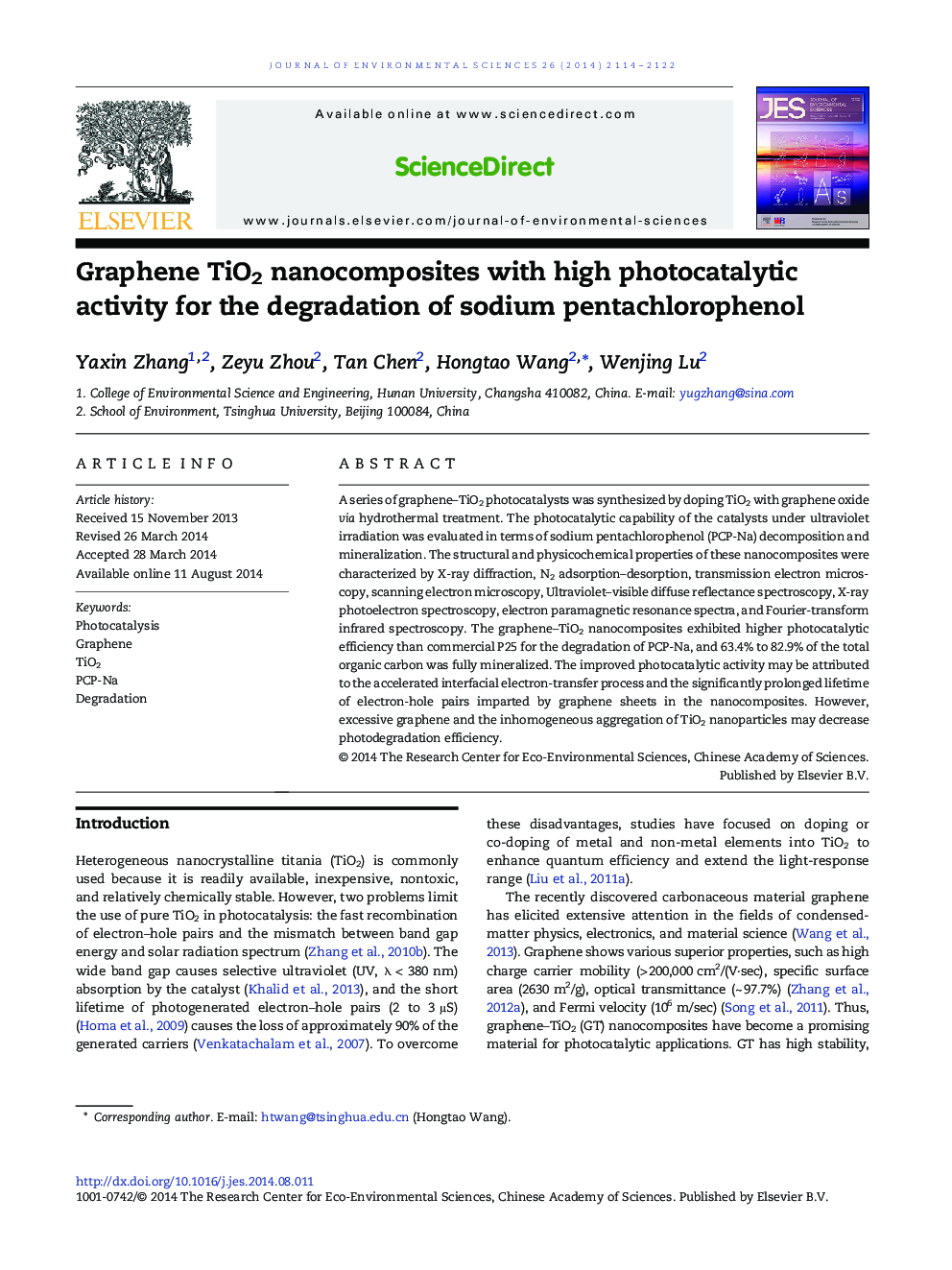| کد مقاله | کد نشریه | سال انتشار | مقاله انگلیسی | نسخه تمام متن |
|---|---|---|---|---|
| 4454405 | 1312479 | 2014 | 9 صفحه PDF | دانلود رایگان |

A series of graphene–TiO2 photocatalysts was synthesized by doping TiO2 with graphene oxide via hydrothermal treatment. The photocatalytic capability of the catalysts under ultraviolet irradiation was evaluated in terms of sodium pentachlorophenol (PCP-Na) decomposition and mineralization. The structural and physicochemical properties of these nanocomposites were characterized by X-ray diffraction, N2 adsorption–desorption, transmission electron microscopy, scanning electron microscopy, Ultraviolet–visible diffuse reflectance spectroscopy, X-ray photoelectron spectroscopy, electron paramagnetic resonance spectra, and Fourier-transform infrared spectroscopy. The graphene–TiO2 nanocomposites exhibited higher photocatalytic efficiency than commercial P25 for the degradation of PCP-Na, and 63.4% to 82.9% of the total organic carbon was fully mineralized. The improved photocatalytic activity may be attributed to the accelerated interfacial electron-transfer process and the significantly prolonged lifetime of electron-hole pairs imparted by graphene sheets in the nanocomposites. However, excessive graphene and the inhomogeneous aggregation of TiO2 nanoparticles may decrease photodegradation efficiency.
Journal: Journal of Environmental Sciences - Volume 26, Issue 10, 1 October 2014, Pages 2114–2122